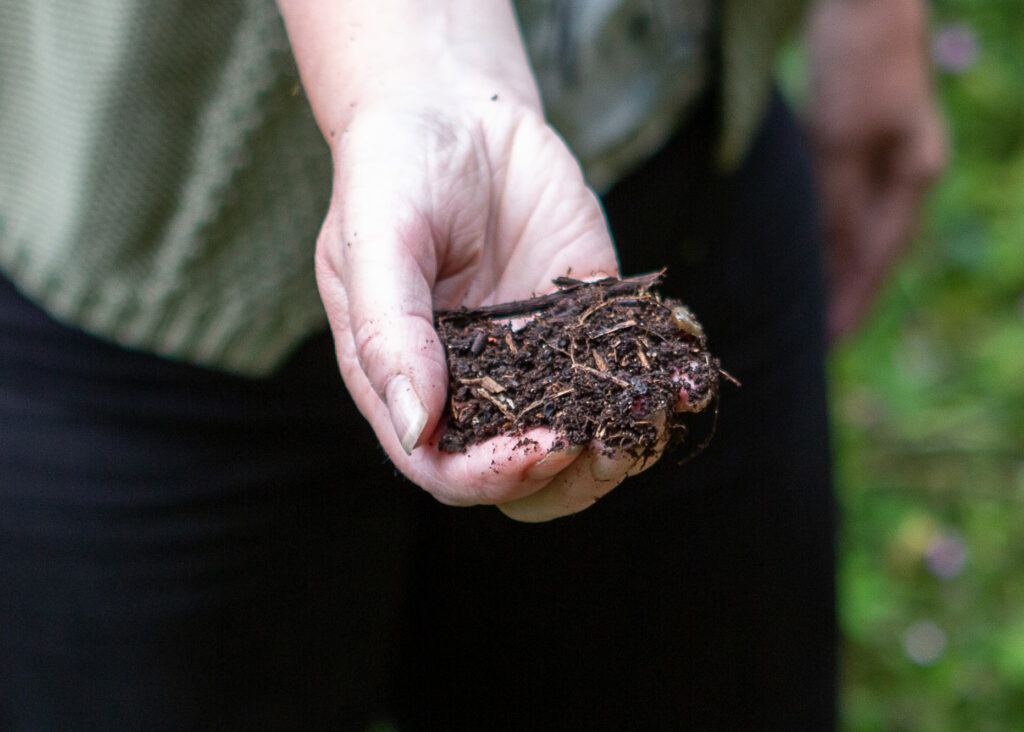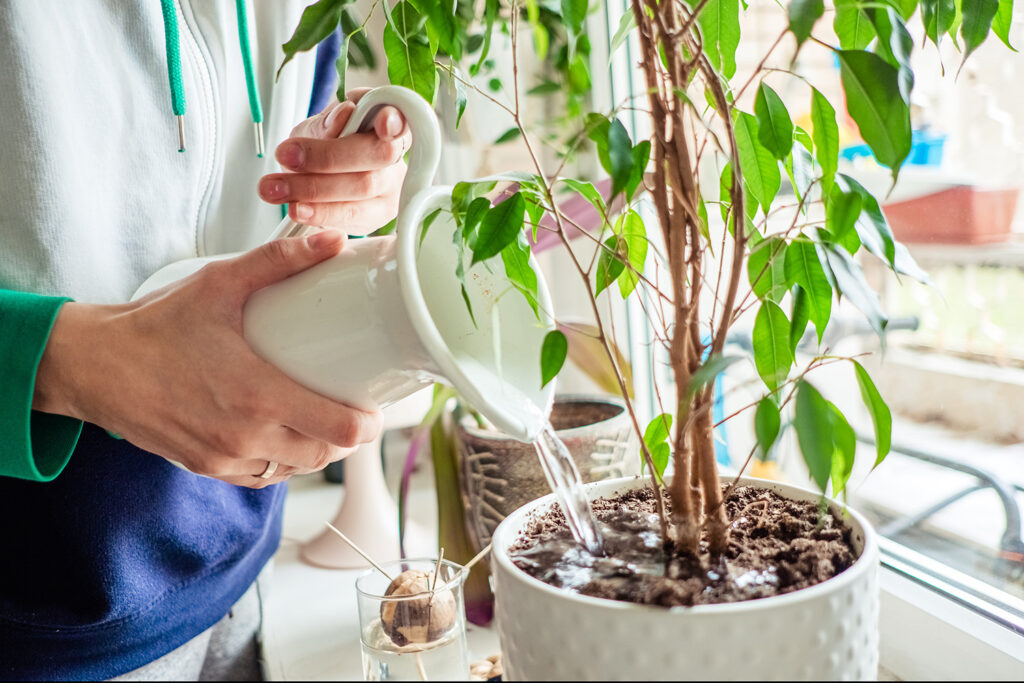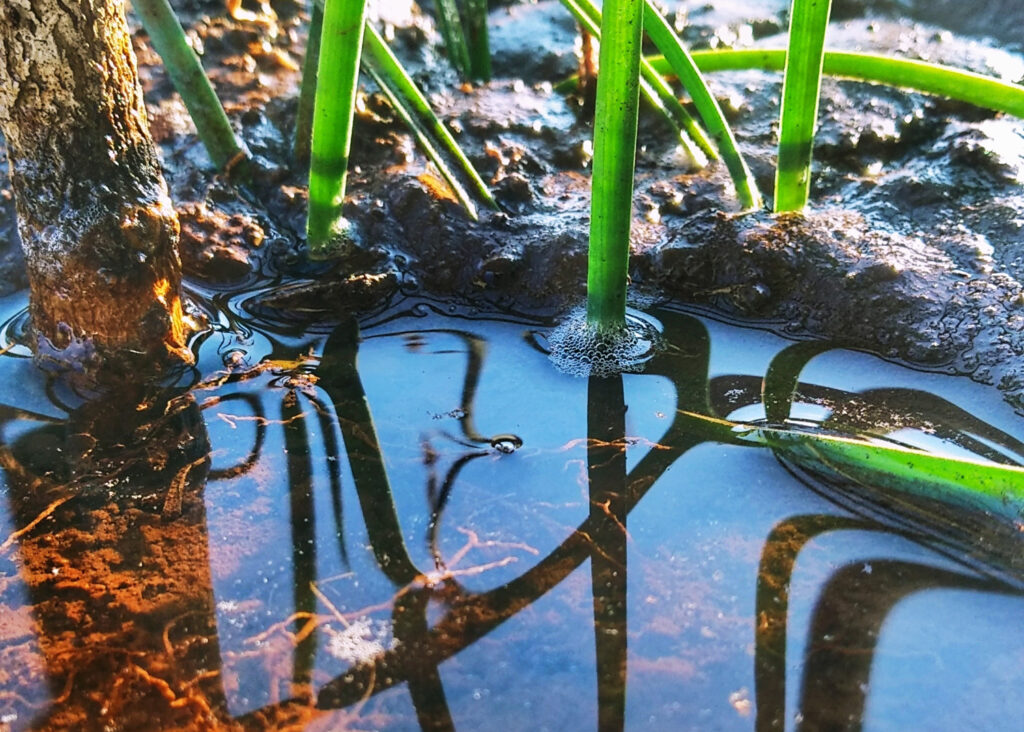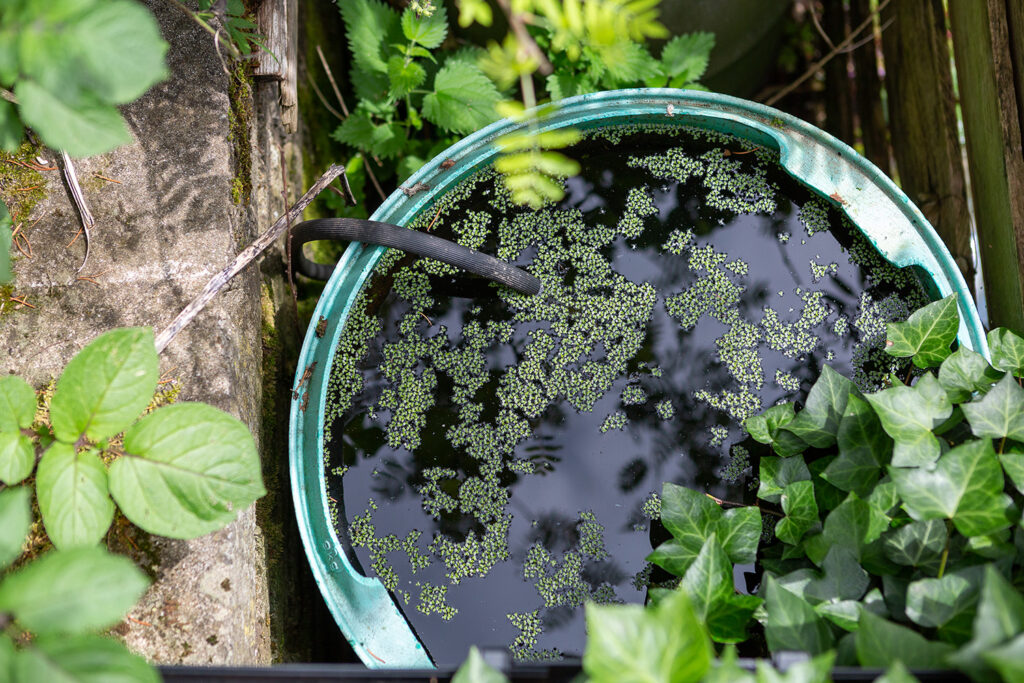Go peat free for more sustainable gardening
Spring is here and for gardeners that means planning, sowing and planting. But if you’re thinking of buying bagged compost then you’ll want to know about peat free compost. Janet Manning, a horticultural scientist, explains the benefits of going peat free and how to water it correctly. Get a head start as from next year amateur gardeners will not be able to buy peat-based compost anyway.
Peat needs to stay in the environment, not in compost

The UK’s peatlands store 3.2 billion tonnes of carbon
For around the last four decades, composts were mainly made of peat. But more and more are being made with renewable ingredients, known as peat free composts. This takes us on another much-needed step towards sustainability.
We need to move away from using peat to preserve and restore this country’s peatlands, which are hugely important. Peatlands are the UK’s largest store of carbon – 3.2 billion tonnes according to the UK Centre for Ecology & Hydrology. If you compare an area of peat bog with the same area of tropical rainforest, the peat bog stores more carbon! Peatlands also store rainwater so their restoration should help to protect our water resources. Furthermore, they support a huge range of unique biodiversity.
Unfortunately, the rate of extracting peat is outstripping the rate at which it is deposited. Peat is formed by multiple layers of sphagnum moss which has grown over thousands of years, producing only around 1mm a year. Because peat needs protecting, the UK Government has said that selling peat-based compost to amateur gardeners won’t be allowed from 2024.
Many gardeners and growers have already successfully made the switch to peat free compost, knowing peat is better left in the ground to store carbon and water, and protect the biodiversity that lives there.
Switching to peat-free compost

Making your own peat free compost is the most sustainable option
Making your own peat free compost from leaf mould or garden waste will be the most sustainable option, but it can take time to mature. When it comes to buying it, different brands are based on different raw ingredients, so they can have slightly different properties. These include wood fibre, wood chip, pine bark, coir, bracken, sheep wool, and a by-product of biogas production known as anaerobic digestate.
Changing your growing media may also mean altering the way you water your plants. This is because the different ingredients used in peat free compost means they all tend to hold onto different amounts of water and nutrients. Changing your compost is not a single change to your growing conditions; water, nutrients, pH and oxygen are all factors that will be affected. This may change the watering needed, both the amount and frequency.
Watering is thought of as a simple task. But watering the right amount at the right time, and ensuring water reaches the roots where it is needed, takes a little more thought. It is vital that gardeners learn how to water, and understand the pitfalls which can result in plants, water and nutrients being wasted. Find out more in my other blog.
How to correctly water your peat free compost

Changing compost may mean you need to change how you water
The key to watering is enabling the compost to hold onto enough water and air for the roots and soil organisms to respire and retain enough nutrients, until the next watering or feeding. Too much watering can be as much of a problem as too little, and the nutrients are only useable to the plant when they are dissolved in water. Successful growing is about risk management; the more we understand the potential problems, the more likely we’ll avoid them and grow plants successfully.*
Don’t water too frequently
When your compost is really wet and compact that means there is less space around the roots for air. Air is as essential as water because the roots need to respire just as much as they need water. Keeping your compost saturated with water all the time can result in ‘waterlogging’, which could be re-named ‘suffocation’, because it’s the lack of oxygen that does the real damage, not the water.

Too much water can deprive soil of air and suffocate plants
A compost that has large particles will help hold larger air pockets. Water may still drain to the bottom because the top layers will hold less, but that isn’t a problem if there is still air around the roots (in other words if the compost isn’t saturated). As a good example of the importance of air, look at historic water meadows, which were traditionally floated with water. The water was moving and held sufficient dissolved oxygen, at low winter temperatures.
Don’t use too much water
Generally, compost can hold between 40-60% of its volume as water. A large volume of water added quickly either misses the compost altogether (by running off the surface and down the sides of the container), or it travels through the compost and straight out the bottom, or both. When you stop watering, the excess water will drain away and draw fresh air into the root zone to help the roots respire. But every time the compost drains, it also risks losing nutrients. A lot of water added too quickly will also wash fine particles into the deeper layers of the pot, causing the bottom of the pot to become airless and saturated, while the top layers – with large air spaces – will dry too quickly as they drain freely.
Avoid swinging between flood and drought
I often hear that ‘watering thoroughly but infrequently’ is recommended, but for container growing that’s like flood and drought on a smaller scale, and both are damaging to plants and soil. As we’ve already seen, wet compost means less air and oxygen for roots, so although the plant now has all the water it could ever need, the growth may slow because of the lack of oxygen and uptake of nutrients. Conversely, if you water infrequently, there’s always a danger that the plant is rather closer to the wilting point than you thought, and damage can be done to roots well before the plant is spotted wilting. It’s better to keep containers just moist at all times.
Stop leaching nutrients

Harvested rainwater has a naturally low pH that is better for plants
Most nutrients will hopefully end up in your plants but as I’ve mentioned above, overwatering can leach nutrients away. Even if you are careful and don’t let water run out of the bottom of the pot, it’s possible that some nutrients still don’t reach the plant. If the compost smells of rotten eggs that means the oxygen has been used up (described as anaerobic), so the roots won’t be able to take up nutrients even if there are still plenty. Again, watering not to frequently will help ensure there’s air.
In anaerobic conditions nitrate can be converted into gasses which the plants can’t use and can be lost to the atmosphere. This is doubly bad news as nitrous oxide is a much more potent greenhouse gas than carbon dioxide. Furthermore, this can be accelerated by higher temperatures and a higher pH. Use harvested rainwater as it has a naturally low pH rather than mains water (or private borehole) which is nearly always a higher pH.
What particle size?
Smaller particles pack closer together and generally hold more water and less air. If your compost looks chunky, the top layer may dry out quickly, whereas a finely milled compost is likely to hold more water and also have good wicking ability to draw water upwards. If you prefer to water from the base of the container, then it’s best to choose a fine compost, but if you water from above, choose a chunkier free draining one.
A little more thought to watering
In summary, to get the most from watering your peat free compost:
- Switch to rainwater rather than mains or borehole for lower pH water and better nutrient availability
- ‘Check’ the watering, rather than ‘do’ the watering more frequently. Little and often is better than flood and drought in containers of compost
- Only water if there is capacity for the compost to absorb the water without it running out of the bottom of the pot
- Don’t fill the compost to capacity, as keeping ‘the glass half full’ is fine for containerised plants
- Run your own small-scale trials, to understand how your specific growing methods may need to adapt.
Check out more blogs from Janet on how to grow better plants while saving time and water.
*There are gardeners and growers that have trialled composts against each other with variable results but as a scientist, I’m not going to even try to attempt a growing trial as there are just too many variables to control and measure through a growing season to provide truly meaningful results. Its better that growers do their own small trials.
Back
